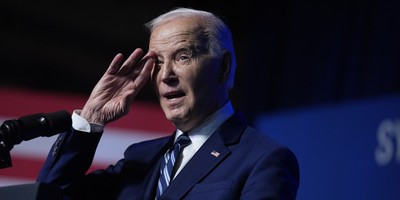 This month, the presidential and vice presidential candidates from both parties will face off on the debate stage. Beverly Hallberg--president of Distrcit Media Group, which provides on-camera communication skills--shares with Townhall Magazine which factors play a key role in the impressions viewers take away from debates.
This month, the presidential and vice presidential candidates from both parties will face off on the debate stage. Beverly Hallberg--president of Distrcit Media Group, which provides on-camera communication skills--shares with Townhall Magazine which factors play a key role in the impressions viewers take away from debates.
From Townhall Magazine's October column, "The Debates: Image is Everything," by Beverly Hallberg:
In 1990, the multinational corporation Canon Inc. had one of its most successful advertising campaign to date, featuring former professional tennis player Andre Agassi uttering the tagline, “Image is Everything.” This candid phrase defined, with great simplicity, the magic of the camera and its ability to alter and shape perception, even in presidential debates.
Image proved extremely important in 1960 when GOP Vice President Richard Nixon and Massachusetts Democrat Sen. John F. Kennedy dueled in the first-ever televised presidential debate. It was a break-through TV moment because the American people had never seen presidential candidates face off. While both candidates were equally matched in delivering their message, Nixon, who was ahead in the polls, failed to deliver a strong image on camera. ... Kennedy, on the other hand, spent hours practicing his message as well as his image. He knew exactly where to look, how to sit and when to smile. ...
It’s not just preparation that affects a candidate’s image during the debates, however. Networks play a subtle and often invisible role.
Recommended
Through the art of video production, one candidate can be portrayed more favorably than the other. On October 7, 2008, then-Sen. Barack Obama and Sen. John McCain met for the second of three presidential debates. The format was a town hall debate. Both men roamed the floor and locked eyes with the audience members who asked questions. Numerous cameras were placed around the room to capture the candidates regardless of where they stood.
While equal time was given to each man for questions, the audience, when viewing the televised debate, experienced subtle differences in the camera angles for each candidate. Typically, when Obama spoke, the camera displayed a close up, eye-level image, filling the frame with his upper chest and face. This presented to the viewer a strong image of Obama. In contrast, when McCain spoke, the camera often showed a waist-up, medium shot, filling the frame with as much background as McCain himself. These shots made McCain appear small, which was exaggerated from time to time by camera angles that looked down on him. In addition, because of the wide shots of McCain, Obama had more face time on camera, as he was often shown in the background when McCain answered a question.
On October 3, the broadcast networks will air the first of three presidential debates between President Barack Obama and former Massachusetts Gov. Mitt Romney. Will the candidates be ready for the spotlight? Will the networks present an unbiased view, free of image manipulation through camera angles and lighting subtleties? While these are questions yet to be answered, one thing is for sure. The lesson learned in 1960 will once again prove true—image really is everything
To read more of Beverly's column, order the October issue of Townhall Magazine.























Join the conversation as a VIP Member